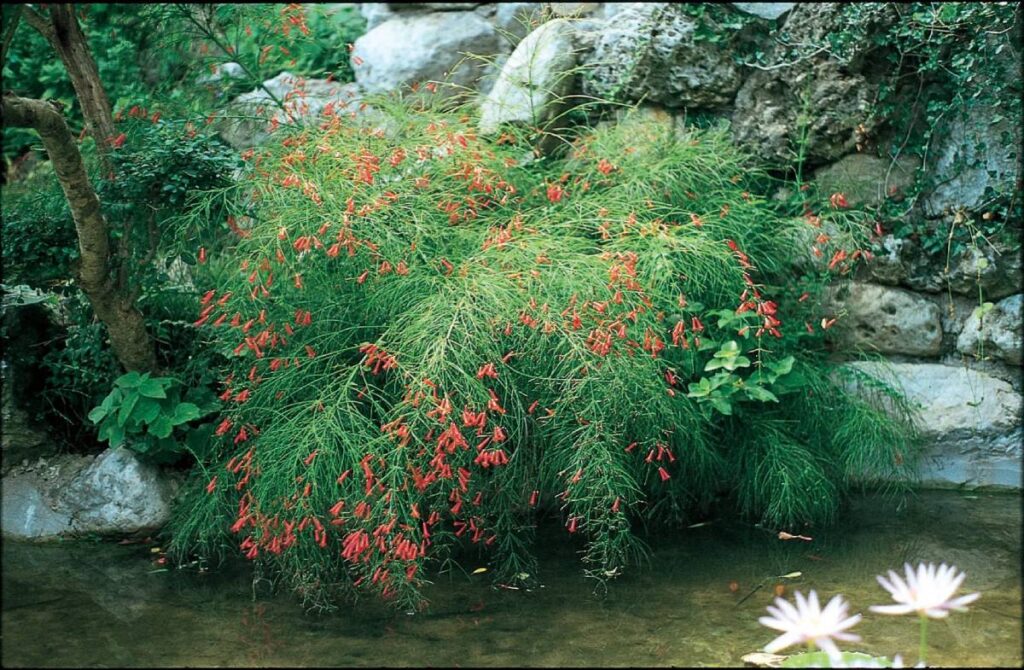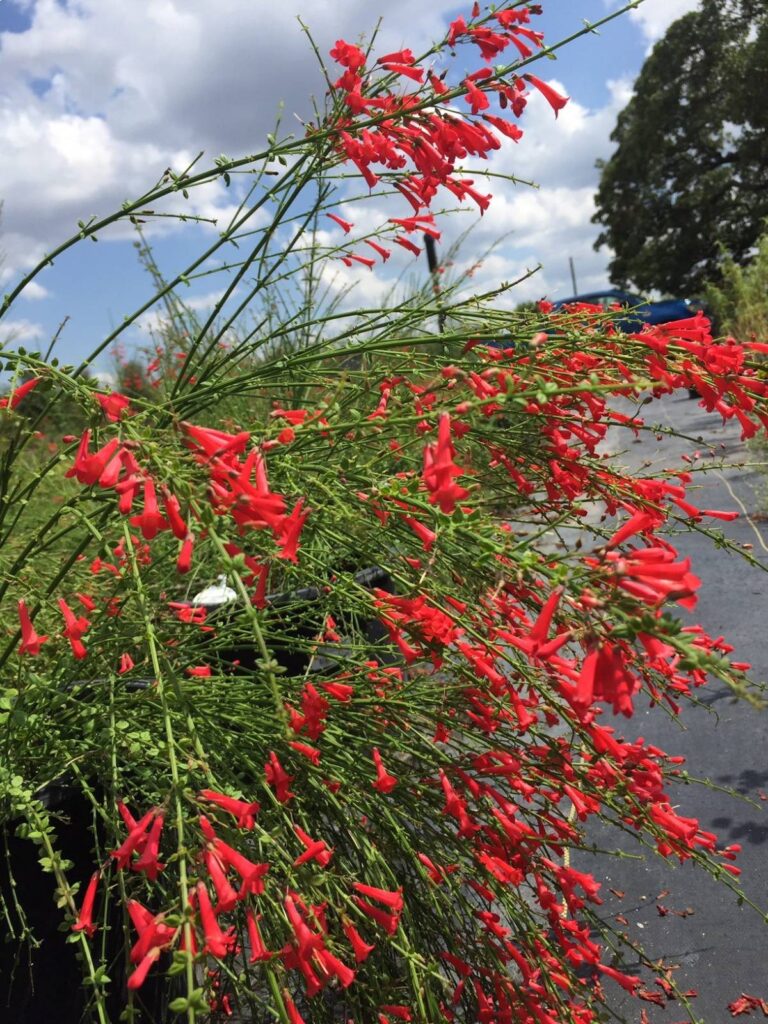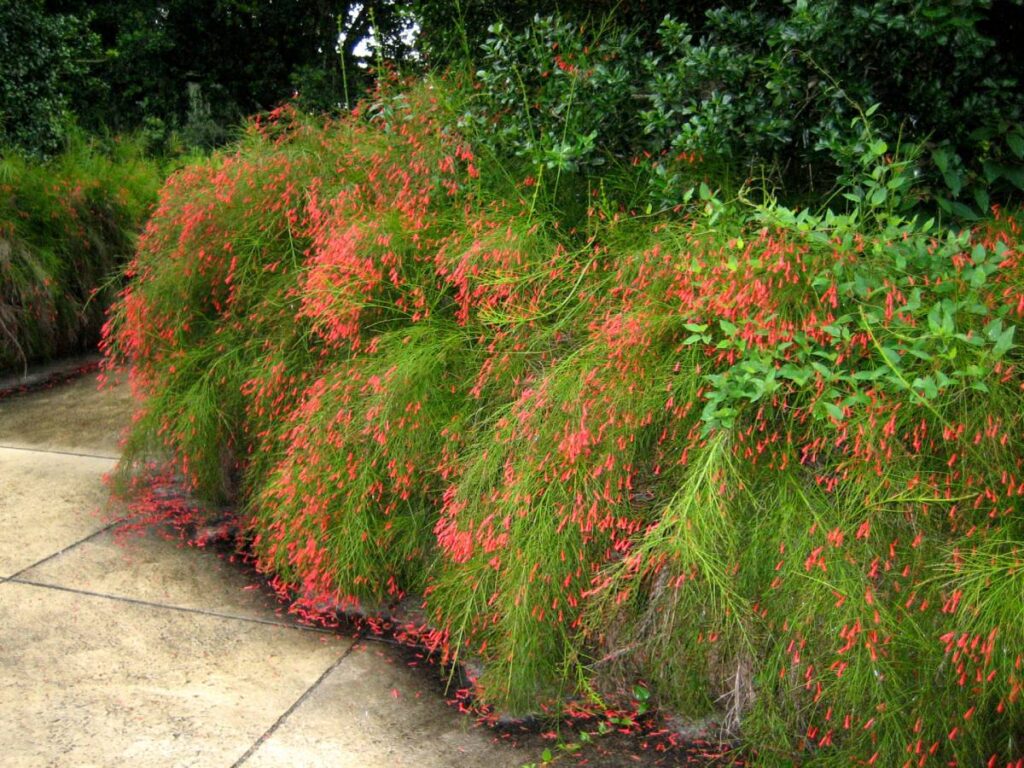Firecracker Fern
Russelia equisetiformis
The Firecracker Fern is a stunning plant that's well-adapted to Texas landscaping. The drought-tolerant plant does well in Austin's summer heat, providing several months of color and a unique look you can't help but appreciate.
Despite its common name, the Firecracker Fern isn’t a type of fern. It’s a look-alike that belongs to the same family of plants as snapdragons and foxgloves. Take one look at the Firecracker Fern, and it’s not hard to see why Austin landscapers and property owners love them. The bushy perennial is dense, producing thin stems of small oval leaves.
When spring rolls around, those stems will start producing buds that bloom into long, tube-like flowers. Because the stems are so thin, the weight of the flowers causes them to droop. The result is a breathtaking weeping effect!







